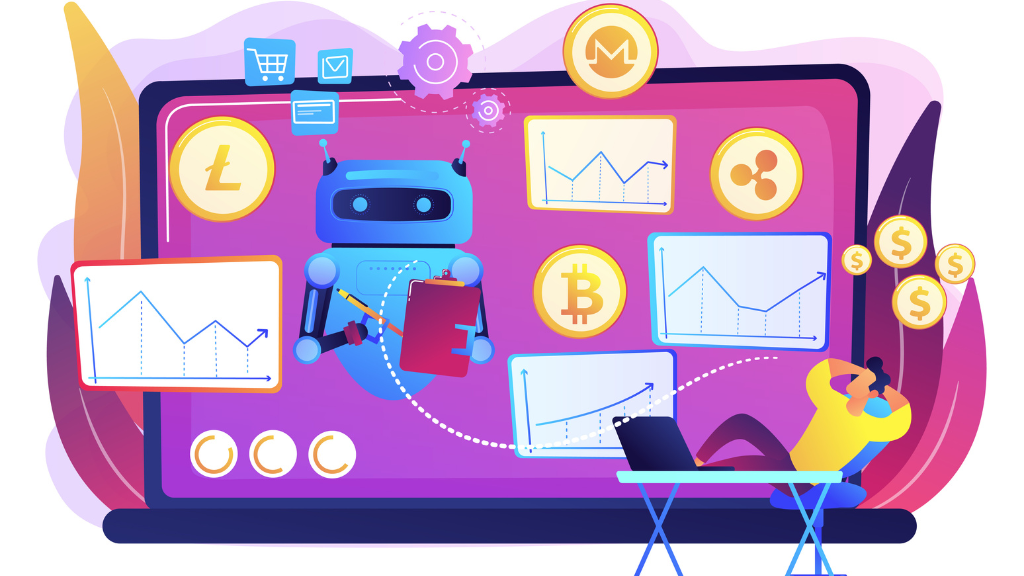Artificial Intelligence (AI) has become a vital part of modern business, transforming industries and creating new opportunities. But how do AI companies generate revenue? This article explores the various strategies AI firms use to make money, including their applications in business and ways individuals can profit from AI.
1. Uses of AI in Business
The growing AI use in business has transformed industries, making operations more efficient and cost-effective. Companies rely on AI to automate processes, improve decision-making, and enhance customer experiences.
Enhancing Customer Service
Businesses are using AI-powered chatbots and virtual assistants to provide 24/7 customer support. These tools can handle inquiries, resolve issues, and offer personalized recommendations, leading to increased customer satisfaction.
Optimizing Operations
AI helps in automating routine tasks, allowing employees to focus on more strategic activities. For example, AI-driven analytics can predict maintenance needs in manufacturing, reducing downtime and saving costs.
Personalizing Marketing Efforts
Marketing strategies are becoming more targeted with AI. By analyzing customer data, AI can predict buying behaviors and preferences, enabling businesses to tailor their marketing campaigns effectively.
2. Revenue Models for AI Companies
AI companies employ various business models to generate income. Understanding these models provides insight into how AI firms sustain their operations and grow.
Subscription Services
Many AI companies offer their software and tools through subscription-based models. Customers pay a recurring fee to access AI services, ensuring a steady revenue stream for the provider.
Licensing AI Technology
Firms develop AI technologies and license them to other businesses. This approach allows companies to integrate advanced AI solutions without developing them in-house, while the AI firm earns licensing fees.
Data Monetization

Data is a valuable asset in the AI industry. Companies collect and analyze data, then sell insights or datasets to other businesses seeking to enhance their operations or decision-making processes.
Consulting Services
AI companies provide expert consulting to organizations looking to implement AI solutions. This includes assessing needs, developing custom AI strategies, and assisting with integration, all of which are revenue-generating services.
3. Money from AI
Many entrepreneurs are exploring how to make money by AI, whether by developing AI-driven applications, providing AI-powered consulting services, or leveraging AI tools for content creation and marketing.
Developing AI Applications
Creating AI-driven applications for specific industries can be lucrative. For instance, developing AI tools for healthcare diagnostics or financial analysis addresses niche markets with high demand.
Offering AI-Based Services
Freelancers and entrepreneurs can offer services such as AI-driven data analysis, content creation, or personalized coaching. Utilizing AI tools enhances efficiency and allows for competitive pricing.

Investing in AI Companies
Investing in AI startups or established firms can be profitable. As AI continues to grow, companies leading in innovation are likely to see increased valuation, benefiting their investors.
4. Challenges in Monetizing AI
While opportunities abound, monetizing AI comes with challenges. Companies and individuals must navigate these to achieve sustainable success.
High Development Costs
Developing AI technologies requires significant investment in research, talent, and infrastructure. These costs can be a barrier, especially for startups and small businesses.
Data Privacy Concerns
Collecting and utilizing data raises privacy issues. Companies must ensure compliance with regulations and maintain customer trust to avoid legal and reputational risks.
Market Competition
The AI sector is highly competitive, with many players offering similar solutions. Differentiating products and services is crucial to attract and retain customers.
5. Future Trends in AI Monetization
The AI landscape is continually evolving, with emerging trends shaping how companies will generate revenue in the future.

AI as a Service (AIaaS)
Offering AI solutions through cloud-based platforms allows businesses to access advanced technologies without significant upfront investment. This model is gaining popularity due to its scalability and cost-effectiveness.
Integration of AI in Consumer Products
AI is increasingly embedded in everyday consumer products, from smart home devices to personal assistants. Companies monetizing these integrations tap into a vast and growing market.
Expansion into New Industries
AI applications are extending beyond traditional sectors into areas like agriculture, education, and entertainment, creating new revenue opportunities for AI companies.
6. Case Studies of Successful AI Monetization
Examining real-world examples provides practical insights into how AI companies successfully generate revenue.
Duolingo
Duolingo, a language-learning platform, operates on a freemium model. While offering free access, it generates revenue through subscriptions that remove ads and provide additional features. As of June 2024, Duolingo has 8 million paying subscribers, contributing to its financial growth.
Open AI
Open AI develops advanced AI models and offers access through subscription services. By providing businesses and developers with powerful AI tools, Open AI creates a steady income stream while fostering AI innovation.
7. Ethical Considerations in AI Profitability
Monetizing AI also involves ethical considerations. Companies must balance profit motives with responsible AI development and deployment.
Ensuring Fairness and Avoiding Bias
AI systems should be designed to avoid biases that can lead to unfair treatment of individuals or groups. Ensuring fairness enhances the credibility and acceptance of AI solutions.
Transparency in AI Operations
Being transparent about how AI systems operate builds trust with users and stakeholders. Clear communication about data usage and decision-making processes is essential.
Sharing Benefits with Data Providers
There’s an ongoing discussion about sharing revenue with those who provide data used in AI training. Implementing fair compensation models can encourage data sharing and foster a collaborative ecosystem.
8. Conclusion
AI companies employ diverse strategies to generate revenue, from offering subscription services and licensing technology to data monetization and consulting. Businesses and individuals can also tap into AI to create new income streams. However, navigating challenges such as development costs, data privacy, and market competition is crucial. As AI continues to evolve, staying informed about emerging trends and ethical considerations will be key to successful and responsible monetization.
FAQs
Q1: What are common revenue models for AI companies?
AI companies often use subscription services, licensing agreements, data monetization, and consulting services to generate income.
Q2: How can individuals make money using AI?
Individuals can develop AI applications, offer AI-based services, or invest in AI companies to profit from the growing AI industry.
Q3: What challenges exist in monetizing AI?
Challenges include high development costs, data privacy concerns, and intense market competition.
Q4: What is AI as a Service (AIaaS)?
AIaaS refers to offering AI solutions through cloud-based platforms, allowing businesses to access advanced technologies without significant upfront investment.
Q5: Why are ethical considerations important in AI monetization?
Ethical considerations ensure that AI development and deployment are fair, transparent, and respect data privacy, which is essential for building trust and long-term success.


